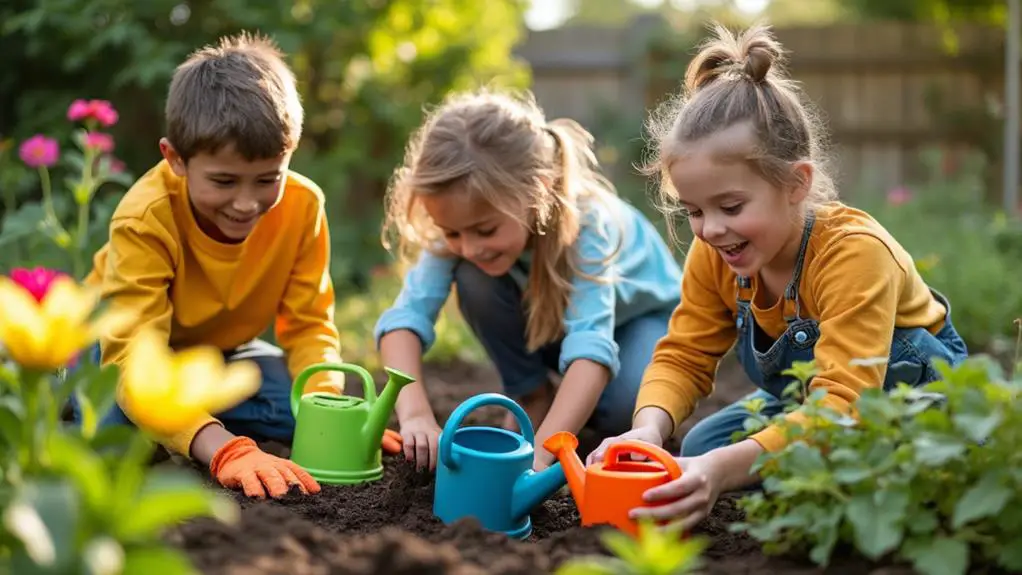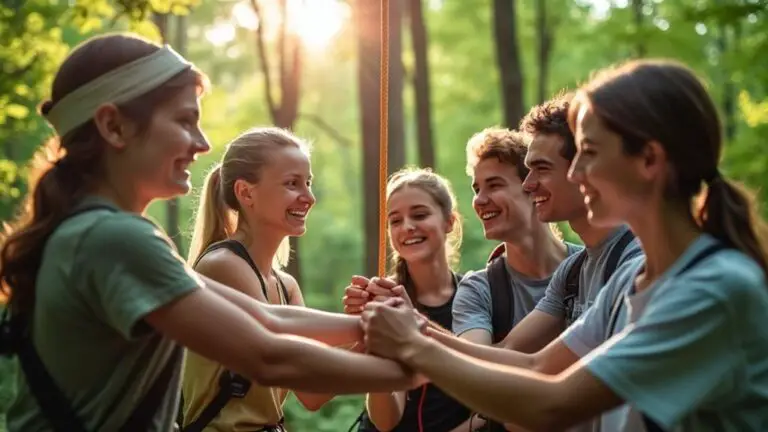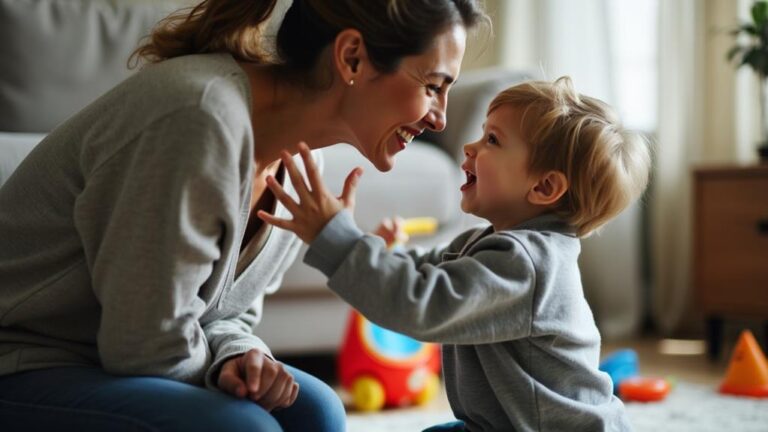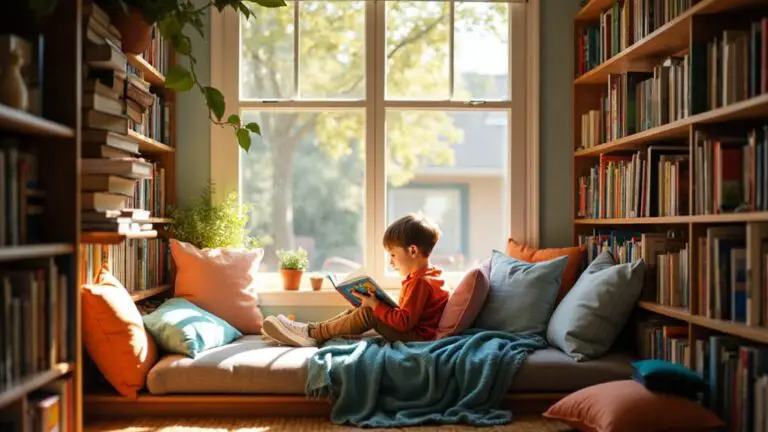Encouraging Gratitude in Kids
I've always believed that teaching kids gratitude is one of the most valuable gifts we can give them. It's not just about saying "thank you" – it's about cultivating a mindset that can profoundly shape their outlook on life. As a parent and educator, I've seen firsthand how children who practice gratitude tend to be more resilient, empathetic, and content. But in a world that often emphasizes material possessions and instant gratification, how can we effectively instill this important value? The answer lies in a combination of modeling, engaging activities, and consistent practice. Let's explore some practical strategies that can make a real difference in our children's lives.
Key Takeaways
- Model gratitude by regularly expressing thanks and appreciation in front of children.
- Implement family gratitude rituals like sharing daily appreciations during meals.
- Engage children in fun gratitude activities such as gratitude jars, scavenger hunts, or storytelling.
- Teach children to write thank-you notes and express verbal thanks for gifts and kind gestures.
- Involve children in community service to foster appreciation for what they have and others' needs.
Understanding the Power of Gratitude
In recent years, the importance of cultivating gratitude in children has gained significant attention. As a parent, I've discovered that teaching kids to express gratitude and show appreciation can have profound effects on their emotional well-being.
Research consistently shows that children who practice gratitude experience higher levels of happiness, optimism, and life satisfaction compared to their peers.
I've learned that the benefits of gratitude extend beyond mere positivity. Grateful children often enjoy stronger social relationships and better psychological health, including lower rates of depression.
What's more, these effects aren't just short-term; teaching gratitude early on can lead to lasting benefits into adulthood. It's clear that encouraging kids to be grateful isn't just about good manners—it's a powerful tool for fostering resilience, enhancing social support, and even improving physical health outcomes.
Modeling Gratitude for Children
Authenticity lies at the heart of modeling gratitude for children. As I've discovered, showing appreciation and expressing genuine gratitude not only help your child develop a sense of gratitude but also encourage prosocial behavior. By consistently demonstrating verbal thanks and acts of kindness, I'm teaching my kids the value of recognizing support from others.
Research supports the power of family gratitude practices. I've found success in:
- Writing thank-you notes together
- Sharing appreciations during meals
- Discussing benefits received from others' kindness
- Engaging in gratitude-focused activities
These actions reinforce the importance of gratitude in daily life. As I model this behavior, I'm fostering my children's social-emotional growth, increasing their happiness and optimism.
Positive psychology emphasizes the long-term benefits of gratitude, and I'm committed to nurturing this essential skill in my kids through consistent modeling and practice.
Fun Activities to Cultivate Appreciation

While modeling gratitude is key, engaging kids in fun activities can make appreciation a more tangible concept. I've found that a gratitude jar helps kids express gratitude daily. It's simple: family members write down what they're thankful for and share at week's end. To show appreciation for their community, I encourage kids to participate in community service. This helps them understand the joy of giving back.
Here's a table of fun activities to cultivate appreciation:
| Activity | Benefit |
|---|---|
| Gratitude jar | Daily reflection |
| Community service | Giving back |
| Gratitude scavenger hunt | Awareness of surroundings |
| Thankful cards | Expressing appreciation |
| Gratitude storytelling | Learning through stories |
These activities, from creating thankful cards to gratitude scavenger hunts, make cultivating appreciation enjoyable for kids. By incorporating storytelling and hands-on projects, we can help children develop a lasting sense of gratitude.
Overcoming Challenges in Teaching Gratitude
How can we navigate the hurdles of teaching gratitude to children?
I've found that young children often struggle to express gratitude due to their developmental stage. It's essential to recognize this challenge and approach teaching kids with patience and understanding.
To overcome these obstacles, I've discovered that consistently modeling and reinforcing gratitude can make a significant difference.
Here are some effective strategies I use:
- Engage in regular gratitude exercises
- Discuss the importance of recognizing others' efforts
- Respect cultural differences in expressing appreciation
- Create opportunities for practicing gratitude daily
Conclusion
I've learned that teaching kids gratitude is a journey, not a destination. It's about creating daily habits and seizing everyday moments to show appreciation. I've seen firsthand how gratitude transforms children's outlooks and relationships. While it's not always easy, especially in our fast-paced world, I'm committed to nurturing this essential quality. By modeling thankfulness and making it fun, I'm confident we can raise a generation of grateful, empathetic individuals.







